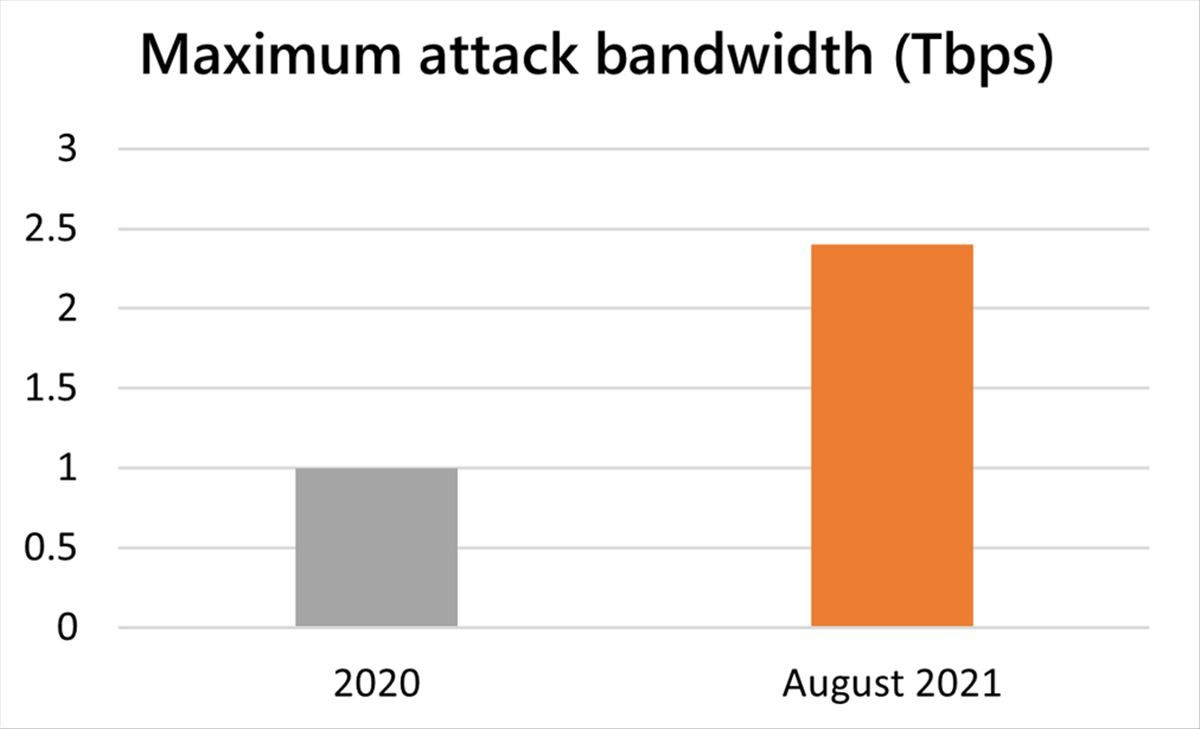This is the foundation of a DDoS assault, one of the most popular online attacks in recent years, responsible for the daily degradation of web pages.
2.4 terabytes per second, the worst DDoS attack in history
A number of assaults can last for a few minutes, many days, others are more intense, and some are milder. There’s also the attack that Microsoft claims to have succeeded in preventing, one that generated 2.4 terabytes per second and was the largest DDoS assault ever recorded.
An attack on Microsoft’s Azure cloud platform increased the power of an existing assault by 140 percent, according to Microsoft. Until now the record was held by a 2.3 Tbps Amazon Web Services attack.

The assault lasted 10 minutes, and the bursts of traffic had a variety of forces. The biggest ones did reach 2.4 Tbps, while others “only” stayed at 0.55 Tbps and 1.7 Tbps.
Given the scale of these assaults, Microsoft’s infrastructure was able to remain online throughout the entire attack and benefit precisely from its ability to swallow terabits of such assaults.
It’s impossible to prevent them since the source of the assaults isn’t a single IP address, nor a defined group. In this situation, the attack traffic came from around 70,000 sources across Asia, including Malaysia, Vietnam, Taiwan, Japan, and China as well as the United States.
Some services choose to respond by asking “prove you’re human,” while others opt for Cloudflare’s “anti-DDoS” mode, and still, others want to queue up people (as occurred with DC’s free NFTs service over the last week). It seems that Microsoft prefers to be more transparent with what is going on and not penalize normal users.





